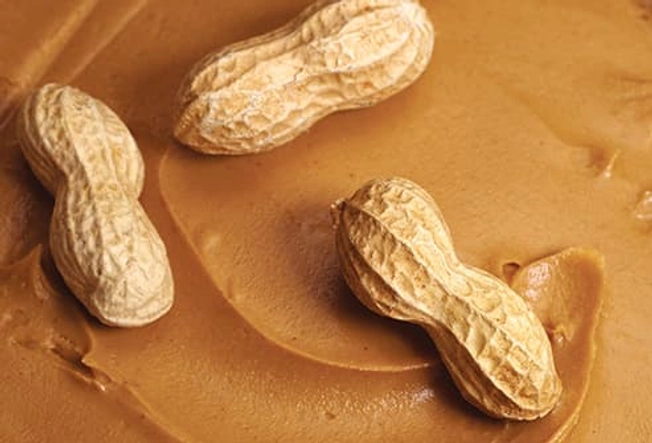What’s an Elimination Diet?


How Does It Work?
The idea is to change your diet for a few weeks by cutting certain foods that might be causing you trouble. The issue might be something like pain, inflammation, headaches, or diarrhea. If the problem goes away, you add the foods back one at a time so you can see which one is the culprit.

How Long Does It Take?
Symptoms caused by food usually go away within 4 weeks of changing your diet. If they haven’t stopped after 8 weeks, those foods probably aren’t the cause.

Is It a Test or Treatment?
An elimination diet is both. You first use it to figure out which foods, if any, cause the problem you want to get rid of. Then you limit them or cut them from your diet -- that’s the treatment part.

What Can It Tell Me?
More research is needed, but this diet has been used as a possible way to diagnose and treat allergies, gluten intolerance (celiac disease), lactose intolerance, chronic pain, fatigue, irritable bowel syndrome, mood and attention disorders, and other conditions.

It Never Bothered Me Before -- Why Now?
Just because you haven’t had a bad reaction to certain foods in the past, doesn’t mean it won’t ever happen to you. You can start having reactions to certain foods at any point in your life.

Could It Be How It's Prepared?
Even if you pinpoint a food, it can be hard to know why it causes you trouble. Is it the food itself? Or the way it’s raised, processed, or seasoned? If it’s hard for you to resist pork, try some that’s raised organically or made without nitrates (a preservative in some bacon and cold cuts), or broil or grill it instead of frying it in grease. With careful testing, you may find that you can get rid of your symptoms and still eat what you love.

Intolerance or Allergy?
Intolerance means you’re sensitive to a certain food or your body has a tough time digesting it. An allergic response can be much more severe and can lead to a life-threatening reaction, called anaphylaxis. It can be hard to tell the difference, so talk to your doctor to be sure.

What Are Some Common Reasons to Use the Diet?
If you think dairy causes your gas, diarrhea, and bloating, an elimination diet can help confirm it. Those symptoms also can be caused by celiac disease. If you have this condition and eat something in wheat and other grains called gluten, your immune system attacks your small intestine. An elimination diet may help figure that out, too.

Can It Help Ease Pain?
Inflammation is the root cause of chronic pain. The heat, swelling, and pain are part of your body’s immune response to what it sees as a threat (but sometimes isn’t). Certain foods can bring on inflammation in some people, particularly ones that have sugar or are highly processed, like frozen pizza or microwave dinners. If you cut out or limit foods that do this to you, you may notice that you feel better.

What Foods Do You Cut for Pain or Inflammation?
If you think you have trouble with one particular food, start with it. If not, dairy, sugar, packaged foods, and processed foods are most often tried first. Some people also cut out gluten. If those don’t work, you might take pork, beef, corn, eggs, shellfish, chocolate, coffee, or tea out of your diet to see if it makes any difference in your pain.

Can It Help With ADHD?
Attention-deficit/hyperactivity disorder is a chronic condition most often diagnosed in children, but it can affect adults, too. Those who have it find it hard to pay attention and may have trouble sitting still or controlling impulses. Research continues, but some studies suggest an elimination diet might help about 25% of people who have ADHD with at least some of their symptoms.

Can It Help With Migraines?
Common migraine triggers are dairy, chocolate, eggs, citrus fruits, meat, wheat, nuts, tomatoes, onions, corn, apples, and bananas. Of course, this doesn’t mean that if you eat these foods you’ll get a migraine -- just that if you do get them, an elimination diet might be worth a try to see if any of these foods are a trigger for you.

Can It Help With Irritable Bowel Syndrome?
It may be very helpful for some people, but it’s not easy to do. That’s because it’s hard to cut out some of the possible food culprits of IBS -- a group of certain carbohydrates (known by the acronym FODMAPs) that can be hard for your body to process. These foods include apples, plums, peaches, onions, cauliflower, and other fruits and vegetables, along with foods and drinks with high-fructose corn syrup. They can cause fluid and gas buildup, belly pain, and bloating. Talk to your doctor or a dietician if you want to try the elimination diet for IBS.

Should You See a Doctor Before You Start?
Yes. When you cut some foods, it can affect other treatments or conditions. Certain medications -- diabetic, blood pressure, blood thinners -- or your dosage may need to be changed, and there’s also a risk of not getting enough nutrients if you cut too many foods or your diet is already very limited. If your symptoms are bad, your doctor should always be your first line of defense.
